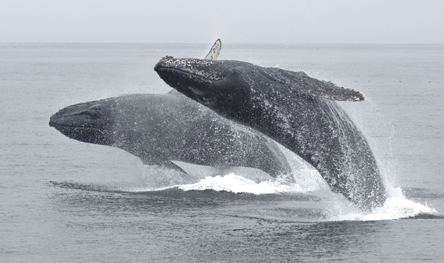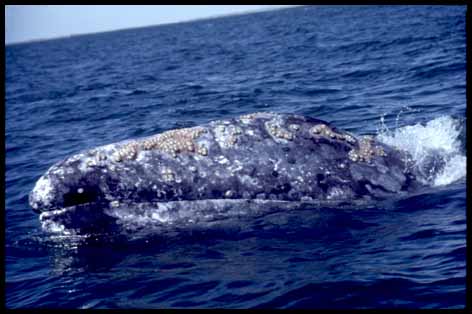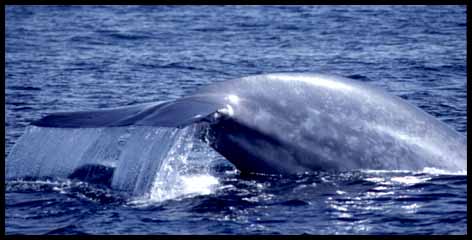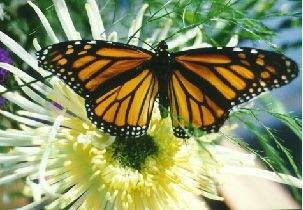
http://farm3.static.flickr.com/2234/2449350041_40e55c9e2c.jpg
Climate
Big Sur has many separate micro-climates due to its jagged and unique topography. It is also one of the few places on Earth where redwoods grow within sight of cacti. Big Sur typically enjoys a mild climate year-round, with a sunny, dry summer and fall, and a cool, wet winter. Coastal temperatures vary little during the year, ranging from the 50s at night to the 70s by day (Fahrenheit) from June through October, and in the 40s to 60s from November through May. Farther inland, away from the ocean's moderating influence, temperatures are much more variable.
WEATHER REPORTS IN BIG SUR
The official National Weather Service cooperative station at Pfeiffer Big Sur State Park reports that January is the coolest month with an average maximum of 60.0 °F (15.6 °C) and an average minimum of 43.2 °F (6.2 °C). August is usually the warmest month, with an average maximum of 77.3 °F(25.2 °C) and an average minimum of 50.2 °F (10.1 °C). The record maximum temperature was 102 °F(38.9 °C) on June 20, 2008. The record minimum was 27 °F (−2.8 °C), recorded on December 21, 1998, and January 13, 2007. There are an average of 8.8 days annually with highs of 90 °F (32 °C) or higher and an average of 1.4 days with lows of 32 °F (0 °C) or lower.
Average annual precipitation at the state park headquarters is 41.94 inches, with measurable precipitation falling on an average of 62 days each year. More than 70% of the rain falls from December through March, while the summer brings much drier conditions. Measurable snowfall has not been recorded in coastal Big Sur, but is common in the winter months on the higher ridges of the Santa Lucia Mountains.
FOG
Big Sur frequently has dense fog in summer. The summer fog and summer drought have the same underlying cause: a massive, stable seasonal high pressure system that forms over the north Pacific Ocean. The high pressure cell inhibits rainfall and generates northwesterly air flow. These prevailing summer winds from the northwest push the warm ocean surface water to the southeast, away from the coast, and frigid deep ocean water rises in its place. The water vapor in the air contacting this cold water condenses into fog. The fog usually moves out to sea during the day and closes in at night, but sometimes heavy fog blankets the coast all day. Fog is an essential summer water source for many Big Sur coastal plants. Most plants cannot take water directly out of the air, but the condensation on leaf surfaces slowly precipitates into the ground like rain.
Big Sur Vegetation and Wildlife

Vegetation
The Big Sur Coastline offers a diverse range of vegetation and wildlife, that is unique to the area. Big Sur has six major climax vegetation types, which means the vegetation that would grow and reproduce naturally without human influences.
Six major vegetation types:
- Chapparral
- Oak and Pine Woodlands
- Riparian Woodlands
- Redwood
- Tanbark-Oak Woodlands
- Coast Brush
Flora and fauna
The many climates of Big Sur result in an astonishing biodiversity, including many rare and endangered species such as the wild orchid Piperia yadonii, which has a highly restricted range of a total population of few individuals. Arid, dusty chaparral-covered hills exist within easy walking distance of lush riparian woodland. The mountains trap most of the moisture out of the clouds; fog in summer, rain and snow in winter. This creates a favorable environment for coniferous forests, including the southernmost habitat of the coast redwood (Sequoia sempervirens), which grows only on lower coastal slopes that are routinely fogged in at night. Many inaccessible redwood forests here were never logged, and in 2008 scientist J. Michael Fay published a map of these old growth redwoods as a result of his transect of the entire redwood range.[27] In areas where they were logged, the redwoods, aggressive regenerators, have grown back extensively since logging ceased in the early twentieth century. The rare Santa Lucia fir (Abies bracteata), as its name suggests, is found only in the Santa Lucia mountains. A common "foreign" species is the Monterey pine (Pinus radiata), which was uncommon in Big Sur until the late 19th century, when many homeowners began to plant it as a windbreak. There are many broadleaved trees as well, such as the tanoak (Lithocarpus densiflorus), Coast Live Oak (Quercus agrifolia), and California Bay Laurel (Umbellularia californica). In the rain shadow, the forests disappear and the vegetation becomes open oak woodland, then transitions into the more familiar fire-tolerant California chaparral scrub. Source: http://en.wikipedia.org/wiki/Big_Sur
Minerals Found in Big Sur
- Sandstone, siltstone, limestone, and granite

Above: This plot displays the spectral signatures of common metamorphic minerals of the Big Sur coast. Mizzonite occurs in metamorphosed limestone and is found in the rocks of the Sur complex. Chlorite and epidote are common constituents of greenstone, which is abundant in the Landels-Hill Big Creek Reserve just north of Lucia; these minerals are a result of the regional metamorphism of basaltic rocks. Antigorite is a secondary serpentine mineral, an abundant mineral in the serpentinites of the southern part of the Big Sur coast.
Big Sur Wildlife

MAMMALS Several bats, myotis, rabbits, ground squirrels, mice, coyotes, ringtails, badgers, spotted and striped skunks, mountain lions, bobcats, mule deer, gray fox, wild boar (introduced from Europe), shrews, woodrats, raccoons, gophers, weasels.
BIRDS Many hawks, eagles, condors, kestrels, pigeons, mourning doves, owls, flickers, woodpeckers, swallows, jays, ravens, bluebirds, warblers, grosbeaks, kingfishers, flycatchers, nuthatches, dippers, thrushes, viereos, orioles, goldfinches. Also a variety of sea birds and waterfowl call Big Sur home, including seagulls,cormorants, willets, sandpipers, oystercatchers, guillemots and many others.
REPTILES Lizards, whiptails and snakes, including gopher snakes, common kingsnakes, western rattlesnakes, garter snakes, rubber boas.
AMPHIBIANS Arboreal salamander, California newt, western toad.
MARINE LIFE The ocean off the coast of Big Sur is designated a Marine Sanctuary and Sea Otter Refuge. The kelp serves as abundant marine ecosystem that is nourished byt he cool and nutrient-filled California current. The marine life in Big Sur includes sea lions, harbor seals, elephant seal, whales, sea otters, and sharks (sometimes spotted off the rocky coastline)
Wildlife & Whale Viewing in Big Sur

Photo by Daniel Bianchetta
Many kinds of wildlife are visible all year long in Big Sur. Others are seasonal:
- December and January: the gray whale migrates south to Mexico.
- March and April: the gray whale migrates north to the north Pacific.

- http://www.bigsurcalifornia.org/whalesgray.html
- June through October: blue whale.

- http://www.bigsurcalifornia.org/images2/bluewhale.jpg
- April through December: humpback whale.

- http://www.bigsurcalifornia.org/inthenews2005-2008.html
- December through March: elephant seal breeding season.

- October to January: Monarch butterflies.




No comments:
Post a Comment